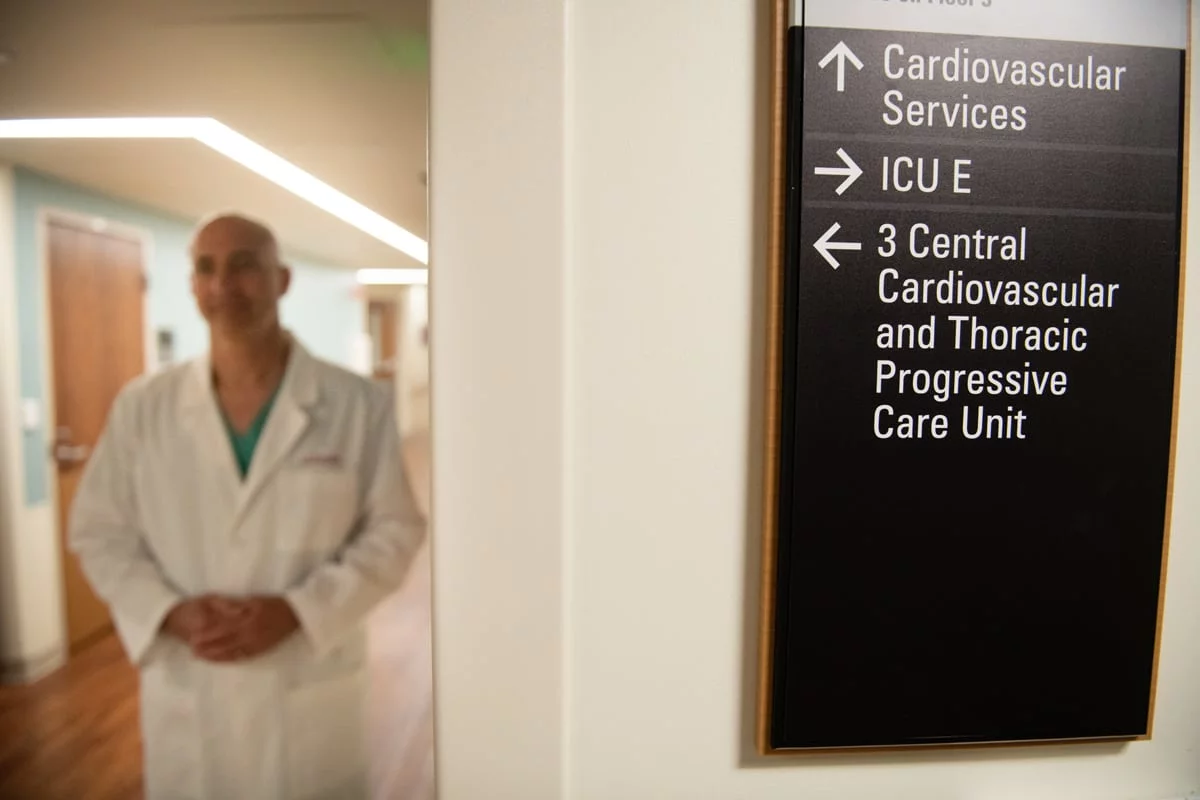
Dr. Peter Walinsky envisions a day when NFL players wear ribbons on their uniforms to raise awareness for what he believes is one of the most significant public health issues facing the United States: heart valve disease.
Just as Americans have learned the benefits of annual mammograms along with prostate exams and colonoscopies at the age of 50, Walinsky wants Americans to have an echocardiogram at age 65 to detect what he calls one of the most “underdiagnosed and undertreated’’ health problem in America.
Heart valve disease (HVD) occurs when a heart valve narrows, blocking the flow of blood from your heart to your body, or the valve leaks because it does not close tightly. Eventually, the valve disease limits how much blood the heart can pump. Over time, the heart muscle can weaken and if left untreated, the risk of death and the need for hospitalization increases.
“As the population ages, it has become more and more of a population health urgency,’’ said Walinsky, who replaces heart valves in an operating suite at UCHealth Memorial Hospital Central.
What’s the risk?
Consider the numbers: Moderate to severe HVD disease is prevalent in 2.5 percent of the overall population. For patients 65 or older, the percentage jumps to 8 percent and for those 75 years and older, 13 percent of the population has HVD.
Walinsky, who works at the UCHealth Heart Clinic – Memorial Hospital Central, said 250,000 patients in the U.S. carry severe symptomatic aortic valve stenosis, or the narrowing of the aortic heart valve. Only one third of those patients will be fortunate enough to have heart valve replacement surgery leaving 180,000 people untreated.
In two years, 90,000 of those patients – 50 percent – will be dead of HVD, when nearly all of them could have been saved by surgery. By comparison, the risk of dying from HVD is far greater than the risk of dying from breast cancer, he said.

Symptoms of HVD include chest pain, shortness of breath or passing out. A person may complain of being overly tired or “slowing down’’ and attribute their lack of energy to growing old when the real issue may be that they have heart valve disease, a problem that can be fixed.
Treatment for significant heart valve disease is often surgery – either open surgery or minimally-invasive surgery. Patients who have open surgery go home from the hospital in five days, while those who undergo a minimally-invasive surgery known as transcatheter aortic valve replacement (TAVR) go home the day after surgery.
TAVR is similar to a stent placed in an artery. A surgeon such as Walinsky inserts a catheter through an artery in the groin and threads it into the heart, delivering a fully collapsible replacement valve to the valve site through a catheter.
Once the new valve is expanded, it pushes the old valve leaflets out of the way and the tissue in the replacement valve takes over the job of regulating blood flow.
“At Memorial, 87 percent of patients who have TAVR go home the next day,’’ Walinsky said. “I did surgery on a 96-year-old lady in the morning, and she was walking the halls that afternoon. She went home the next day.
“Other than the anesthesia, there isn’t much more to recover from. Their groin area may be a little sore for a few days, but by the end of the week, they’ve completely recovered,’’ he said.
Why is HVD underdiagnosed and undertreated?
“Mostly, it’s awareness. A recent survey of people in their 50s, 60s and 70s showed that 75 percent of people are not aware of HVD. They don’t know what it is,’’ Walinsky said.
In addition, HVD tends to have an insidious onset – it doesn’t happen overnight, and people believe they’re just slowing down because they’re getting older. Primary Care Physicians often agree that age is the culprit. At age 65, patients should make sure to ask their primary care doctor to check their heart for a murmur, and order an echocardiogram if a murmur is detected.

One of the biggest factors, Walinsky said, is that families, doctors and even cardiologists hesitate to send patients in older populations to surgery because they believe they are too frail. With the technological advances that have been made in HVD surgery, however, that bias should be eliminated.
“With these less invasive technologies that are getting better all the time, surgery can restore quality of life and potentially restore a normal life expectancy,’’ Walinsky said. “I’ve had people who couldn’t walk to the bathroom (because of shortness of breath) and wake up from surgery and say, ‘I can breathe.’ ’’
Walinsky said that when patients come to see him for a follow-up visit, they often thank him for restoring quality to their lives.
“The best moment for me is walking out of the operating room and going to tell the patient’s family that the case went well, and the patient is doing fine. Seeing them back in the office afterward and seeing how they’ve recovered and how their life is completely different …that’s why I do what I do.’’
